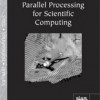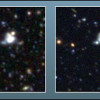News Center
Q&A with NERSC Director Horst Simon
Horst Simon, who has been director of DOE’s National Energy Research Scientific Computing Center (NERSC) since early 1996, announced last month that he was stepping down in order to focus his energy on the two other positions he holds at Lawrence Berkeley National Laboratory. Once a new director for NERSC is hired, Simon will concentrate on his duties as Associate Laboratory Director for Computing Sciences and Computational Research Division (CRD) Director. With the search for a new NERSC… Read More »
Andy Aspden Joins CCSE as Inaugural Seaborg Post-Doc Fellow
Armed with a Ph.D in applied mathematics from the University of Cambridge and a thirst to “broaden his horizon,” Andy Aspden has joined Berkeley Lab as part of the inaugural class for the Glenn T. Seaborg Postdoctoral Fellowships. Aspden will work with John Bell, leader of the Center for Computational Sciences and Engineering in CRD, to expand on his research in fluid dynamics. Aspden, who began his appointment last month, met Bell three and a half years ago when Bell was collaborating… Read More »
CRD Scientists Contribute To A Definitive Book On Parallel Processing
Demand for improving powerful computers has been growing as more researchers worldwide rely on these systems to solve complex scientific problems—fast. In a new book co-edited by LBNL’s Associate Laboratory Director for Computing Sciences, Horst Simon, scientific computing experts from universities and national labs provide a comprehensive look at the state of the art in scientific computing for the effective use of highly parallel computers. The book, titled “Parallel Processing for… Read More »
Paxson's Internet Research Earns "Test of Time" Award
Working in the fast-paced field of Internet research, Vern Paxson of CRD’s Distributed Systems Department has won the inaugural Test of Time Award from the Special Interest Group on Data Communications (SIGCOMM) of the Association for Computing Machinery (ACM). The new award, announced in the current issue of Computer Communication Review (CCR), recognizes research from 10 to 12 years ago that marked a milestone in its field and continues to provide insight today. SIGCOMM recognized Paxson… Read More »
Interview with Wes Bethel, principal investigator for the SciDAC Visualization and Analytics Center for Enabling Technologies (VACET)
When the Department of Energy’s Office of Science announced the latest round of awards in the Scientific Discovery through Advanced Computing (SciDAC) program in September, the funded projects included a new Center for Enabling Technologies that will focus on meeting the visualization and analytics needs of scientists. Called the SciDAC Visualization and Analytics Center for Enabling Technologies, or VACET, the project will be co-led by Wes Bethel, head of the Visualization Group at Lawrence… Read More »
Astrophysicist’s Algorithm Leads to Discovery of Super-massive Supernova
A group of scientists affiliated with the SuperNova Legacy Survey (SNLS) have found startling evidence that there is more than one kind of Type Ia supernova, a class of exploding stars which until now has been regarded as essentially uniform in all important respects. Supernova SNLS-03D3bb is more than twice as bright as most Type Ia supernovae but has much less kinetic energy, and appears to be 1.5 times as massive as a typical Type Ia. The lead authors of the report, which appeared in the… Read More »
Study Links Human Activities to Warmer Oceans, Stronger Hurricanes
New research shows that rising sea surface temperatures (SSTs) in hurricane breeding grounds of the Atlantic and Pacific Oceans are unlikely to be purely natural in origin. These findings, according to a team of researchers including Michael Wehner of CRD’s Scientific Computing Group, complement earlier work that uncovered compelling scientific evidence of a link between warming SSTs and increases in hurricane intensity. Previous studies to understand the causes of SST changes have focused… Read More »
CRD’s Kathy Yelick Named One of HPCwire’s People to Watch in 2006
Kathy Yelick, leader of the Future Technologies Group in LBNL’s Computational Research Division, has been named on of 16 “People to Watch” in 2006 by HPCwire, a weekly newsletter covering high performance computing and networking. In addition to her role at the Lab, Yelick is also an associate professor of computer science at UC Berkeley. According to HPCwire, Yelick is worth watching “because she's already a proven dynamo based on her contributions to the development of the Titanium… Read More »
Researchers Analyze Performance, Potential of Cell Processor
Though it was designed as the heart of the upcoming Sony PlayStation3 game console, the STI Cell processor has created quite a stir in the computational science community, where the processor’s potential as a building block for high performance computers has been widely discussed and speculated upon. To evaluate Cell’s potential, computer scientists at the U.S. Department of Energy’s Lawrence Berkeley National Laboratory evaluated the processor’s performance in running several… Read More »
New Microbial Metagenome Data Analysis System in Production
An experimental metagenomics data management and analysis system co-developed by the Biological Data Management and Technology Center (BDMTC) at Berkeley Lab with the Genome Biology Program and Microbial Ecology Program at DOE’s Joint Genome Institute and released earlier this year is also already helping produce scientific discoveries. Called IMG/M, the system extends the Integrated Microbial Genomes (IMG) system with the ability to integrate and analyze metagenome data, and has provided… Read More »
CRD’s Helen He Develops Method for Easier Use of Community Climate System Model
As part of a comprehensive national project to provide U.S. climate researchers with state-of-the-art modeling capabilities, Yun “Helen” He of CRD’s Scientific Computing Group has developed a “single executable” mode for the Community Climate System Model (CCSM) on NERSC’s IBM SP. CCSM consists of separate programs for modeling atmosphere, ocean, sea ice and land surface and a flux coupler linking the four components. These components are integrated together in original multiple… Read More »
Enron Email Database Proves Easy Pickings for LBNL’s FastBit Search Technology
As the trial of former Enron executives gets under way, the extensive email trails left by employees of the Houston energy firm are expected to provide both compelling evidence and entertaining insight. In 2003, as part of an investigation into Enron’s business dealings in California, the Federal Energy Regulatory Commission made public a database containing more than 500,000 emails sent by 151 Enron employees. Subjects ranged from corporate decisions to jokes to personal matters. While the… Read More »
CRD’s pyGlobus Tools Proving Popular
CRD’s Distributed Systems Department (DSD), which has led the development of the de facto standard tools for developing Grid Services, applications and portals using the Python programming language, proved a popular draw at the LBNL booth at the SC05 conference in Seattle. Python is a high-level interpreted language that supports a rapid application development cycle. Python’s minimal syntax makes it an ideal language for use by non-computer scientists. It also easily supports binding… Read More »
Former DOE Fellow Wilkening Returns to Berkeley
Jon Wilkening, who earned his Ph.D. in 2002 from UC Berkeley working with CRD Math Group Lead James Sethian, has returned to Berkeley as an assistant professor and collaborator with the Math Group. Wilkening accepted a DOE Computational Science Graduate Fellowship in 1997 (while declining an NSF fellowship) and was named a Fred A. Howes Scholar in Computational Science in 2003. As a DOE fellow, he worked as a research assistant in the Math Group from 1997 to 2002. His general research interests… Read More »




















